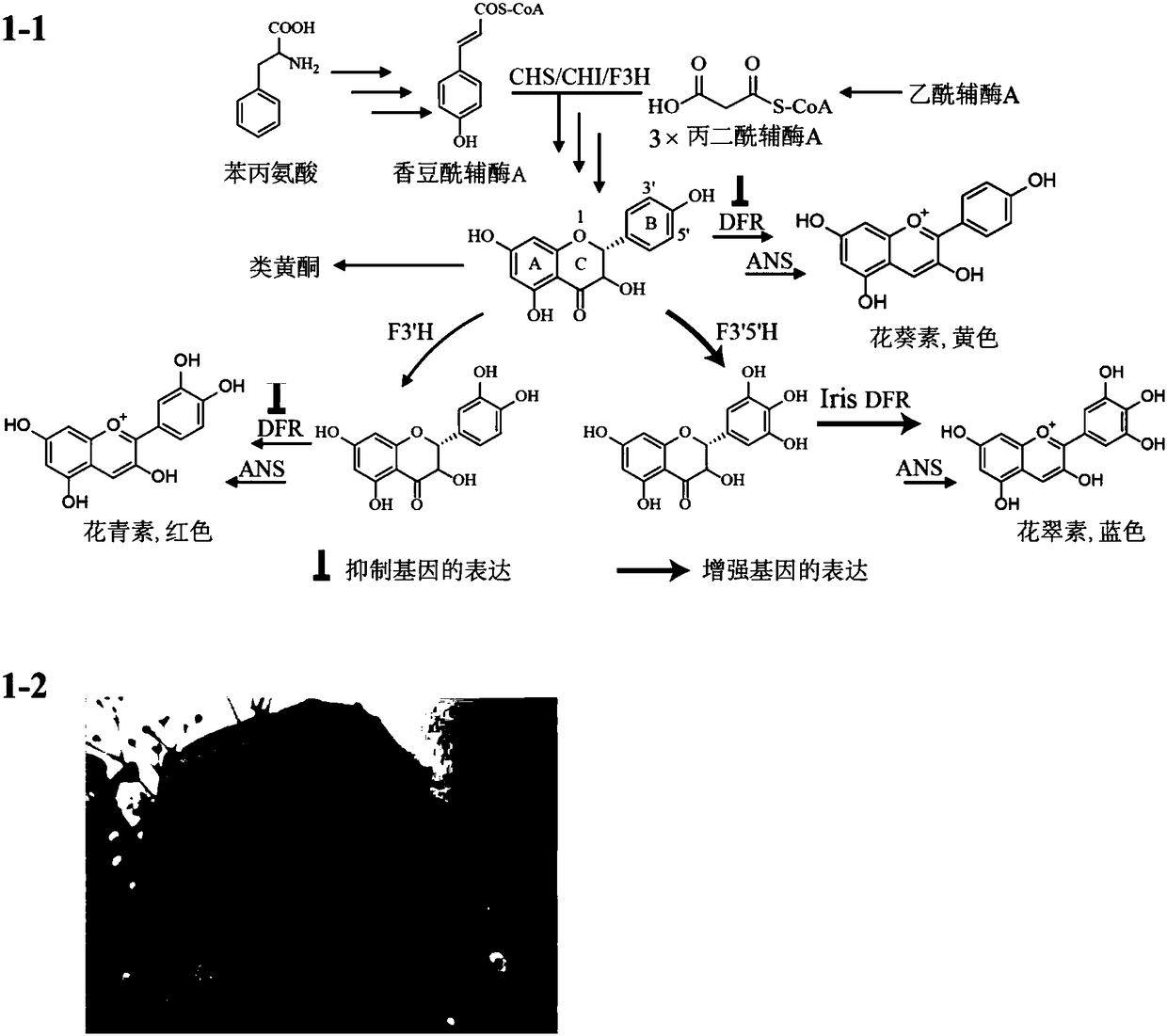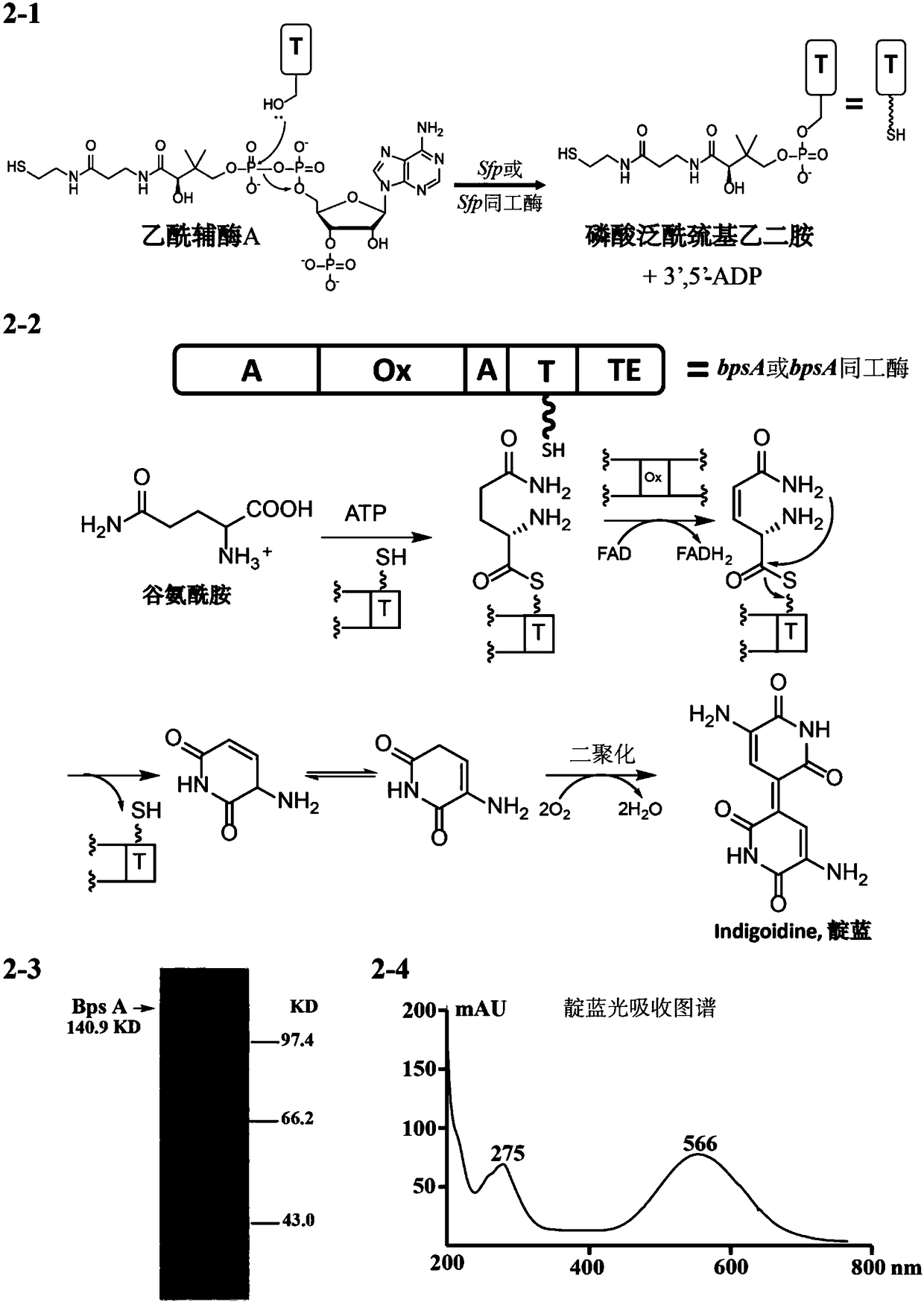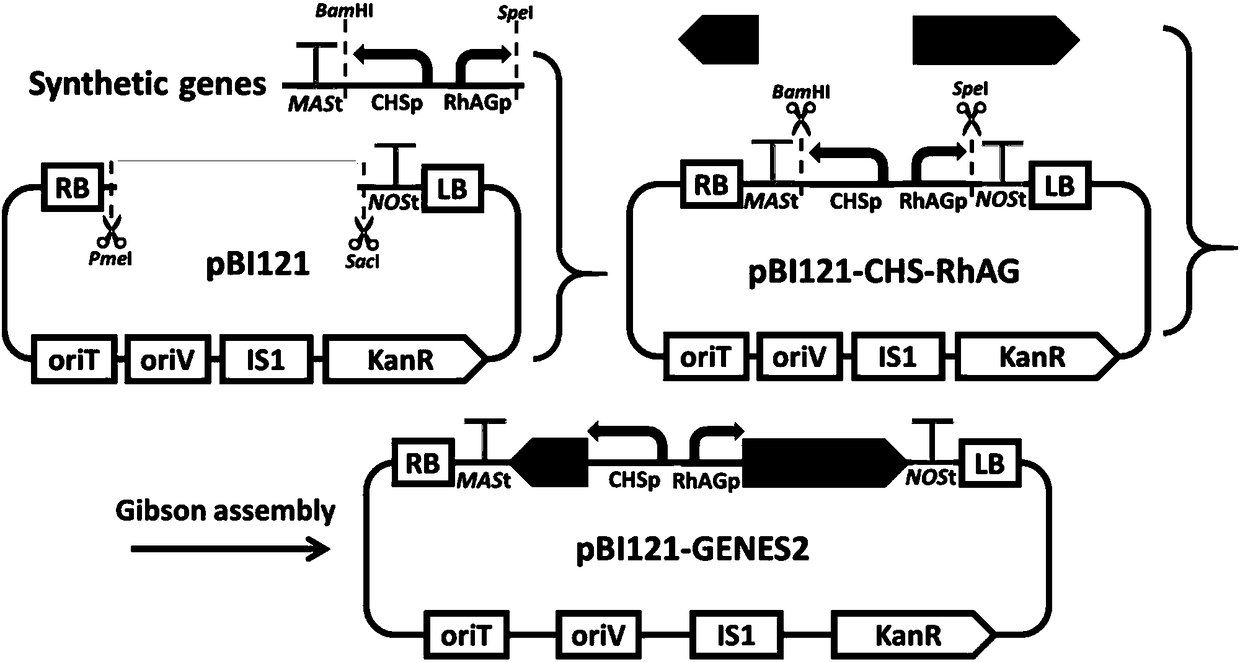Transgene method for obtaining blue flowers through indigo blue synthesis via glutamine catalysis
A technology for synthesizing indigo and glutamine, which is applied in biochemical equipment and methods, genetic engineering, plant genetic improvement, etc., can solve the problems of high production cost, complex precursor substances, and inability to display blue, and achieve easy decolorization. Effect
- Summary
- Abstract
- Description
- Claims
- Application Information
AI Technical Summary
Problems solved by technology
Method used
Image
Examples
Embodiment 1
[0035] Example 1 Gene selection
[0036] Phosphopantetheinyl Transferases activate the sulfhydrylation domain T of non-ribosomal polypeptide synthase, the reaction mechanism is shown in the schematic diagram 2-1 , The activated T domain performs the function of fixing the substrate, which is necessary for the non-ribosomal polypeptide synthase to exert its catalytic function.
[0037] The gene Sfp of the phosphopantetheinyl transferase used in the present invention is derived from Bacillus subtilis ATCC21332 (NCBI number: ALS83446). We adjusted and optimized the gene codon according to the gene codon preference of Rosaceae plants to obtain nucleotides Sequence SEQ ID NO.1. The amino acid sequence encoded by the Sfp gene is shown in SEQ ID NO.2. The selection of Sfp gene should not limit the scope of protection for phosphopantetheinyl transferase in the present invention, and use any gene encoding phosphopantetheinyl transferase from other species, or encoding phosphopantetheinyl ...
Embodiment 2
[0041] Example 2 Plasmid cloning
[0042] The present invention selects the plant binary expression vector pBI121 as the starting plasmid vector.
[0043] Insert an artificially synthesized fragment (SEQ ID NO.7) between the restriction sites PmeI and SacI of plasmid pBI121 to construct plasmid pBI121-CHS-RhAG, see image 3 . SEQ ID NO. 7 includes the terminator sequence MASt of Mannopine Synthase, the promoter sequence CHSp and the promoter sequence RhAGp.
[0044] Using the plasmid containing the sequence of SEQ ID NO. 3 as a template, and using BpsA-FG (SEQ ID NO. 8) and BpsA-RG (SEQ ID NO. 9) as primers, the fragment bpsA was obtained by PCR.
[0045] Using the plasmid containing the sequence of SEQ ID NO. 1 as a template, using Sfp-FG (SEQ ID NO. 10) and Sfp-RG (SEQ ID NO. 11) as primers, the fragment Sfp was obtained by PCR.
[0046] Plasmid pBI121-CHS-RhAG was digested with restriction enzymes BamHI and SpeI, purified and recovered to obtain fragment CHS-RhAG and plasmid pBI121 ...
Embodiment 3
[0047] Example 3: Preparation of Competent Agrobacterium Carrying Target Gene
[0048] The plasmid pBI121-GENES2 obtained by plasmid extraction from Escherichia coli was transformed into Agrobacterium. The preparation of Agrobacterium competent cells is a general method, specifically:
[0049] 1. Agrobacterium tumefaciens GV3101 was cultured on LB agar medium containing 10μg / mL rifampicin and 50μg / mL gentamicin at 28°C for two days;
[0050] 2. Monoclonal colonies were inserted into 5mL LB liquid culture medium (10μg / mL rifampicin and 50μg / mL gentamicin) containing the same antibiotics and incubated overnight at 28°C on a shaker at a rotation speed of 150 revolutions per minute.
[0051] 3.2mL of Agrobacterium culture broth cultured overnight, diluted to 200mL LB broth, cultured to cell density OD in a shaker at 28°C (rotating speed 250 revolutions per minute) 600 From 0.3 to 0.5.
[0052] 4. The Agrobacterium culture solution was put into a 50mL centrifuge tube, cooled on ice and cent...
PUM
 Login to View More
Login to View More Abstract
Description
Claims
Application Information
 Login to View More
Login to View More - R&D
- Intellectual Property
- Life Sciences
- Materials
- Tech Scout
- Unparalleled Data Quality
- Higher Quality Content
- 60% Fewer Hallucinations
Browse by: Latest US Patents, China's latest patents, Technical Efficacy Thesaurus, Application Domain, Technology Topic, Popular Technical Reports.
© 2025 PatSnap. All rights reserved.Legal|Privacy policy|Modern Slavery Act Transparency Statement|Sitemap|About US| Contact US: help@patsnap.com



